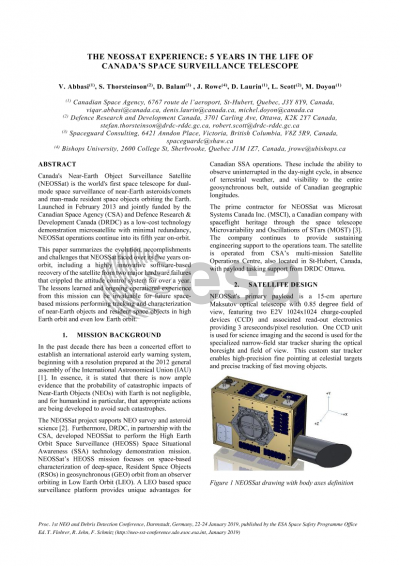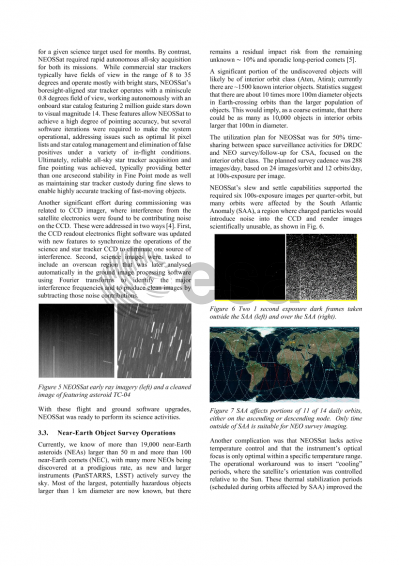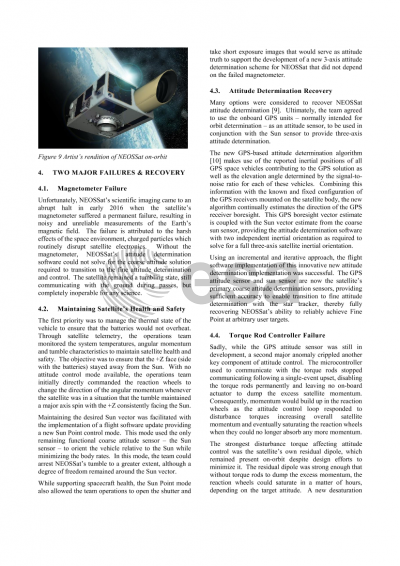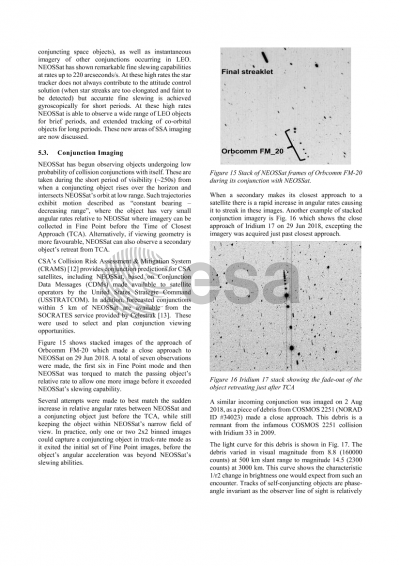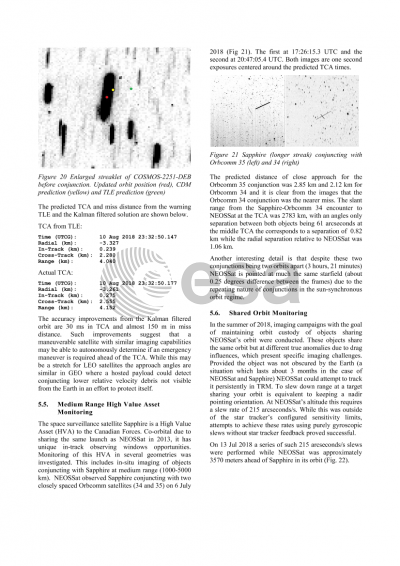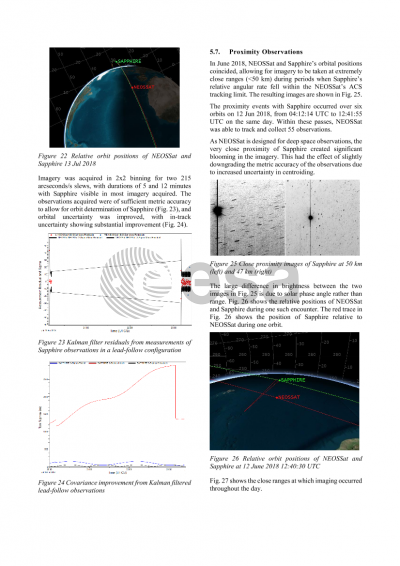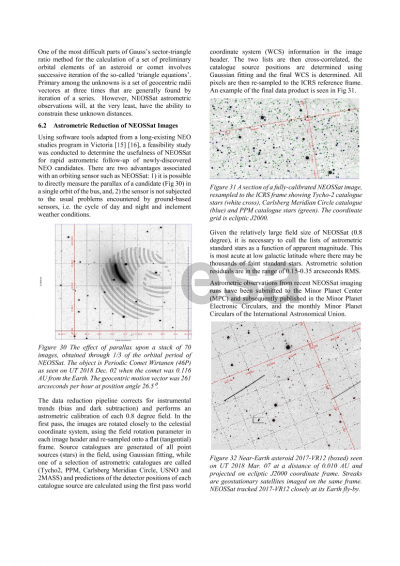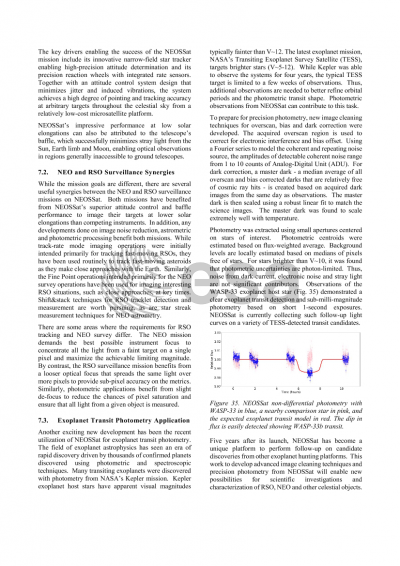Document details

Abstract
Canada's Near-Earth Object Surveillance Satellite (NEOSSat) is the world's first space telescope for dual-mode space surveillance, tracking both celestial objects including near-Earth asteroids/comets and man-made resident space objects orbiting the Earth. Launched in February 2013 and jointly funded by the Canadian Space Agency (CSA) and Defense Research & Development Canada (DRDC) as a low-cost technology demonstration microsatellite with minimal redundancy, NEOSSat experimentation continues well into its fifth year on-orbit.
NEOSSat's primary payload is a 15-cm aperture Maksutov optical telescope with 0.8 deg field of view, featuring two E2V 1024x1024 charge-coupled devices (CCD) and associated read-out electronics providing 3 arcsecond/pixel resolution. The attitude control system includes a narrow-field boresight-aligned custom star tracker allowing precision fine pointing at arbitrary celestial targets and precise tracking of fast moving objects. Track-rate imaging has been successfully demonstrated at speeds up to 215 arcsec/second for observations of space objects in low-Earth orbit (LEO). The telescope baffle allows imaging within 45 degrees of the Sun, an area difficult to image with ground telescopes. During eclipse season, where the Earth can also intermittently serve as a secondary baffle, NEOSSat has successfully imaged asteroids and comets with solar elongations as low as 34 degrees.
For its near-Earth astronomy mission, NEOSSat has provided astrometric observations of known asteroids and comets to the Minor Planet Center (MPC) and has performed extensive imaging of several asteroid close approaches (1989-VB, 2012-TC4, 2002-AJ129, 2017-VR-12). In addition, new applications in space astronomy are being developed for NEOSSat based on long-duration photometry. Applying modern image processing and photometric techniques, NEOSSat is now participating in exoplanet research, by imaging stars with known/candidate transiting exoplanets and demonstrating an ability to detect exoplanet transits. Early results show good photometric precision from NEOSSat observations. The development and validation of precision photometry with NEOSSat enables new studies in near-Earth object characterization from this unique platform.
For its High-Earth Orbit Space Surveillance (HEOSS) mission, NEOSSat has been providing strategic value for Canadian Forces space situational awareness in near continuous monitoring of geosynchronous objects and Canadian space based assets, providing metric and photometric data used for orbit determination and space object characterization. NEOSSat has participated in multinational space surveillance activities involving NATO and European allies, including maneuver monitoring, breakup event characterization and high value asset tracking. Initially intended as a deep space optical sensor, recent improvements in NEOSSat’s attitude and control system allowing fine slewing control at high angular velocities (up to 220 arc-seconds/s) has enabled NEOSSat to explore SSA operations in the LEO to LEO environment.
A brief summary of SSA experiments conducted with NEOSSat in a LEO to LEO configuration is also presented. This includes imagery of LEO objects undergoing conjunction, providing confirmation of close approach distances and timing. Tracking results of objects conjuncting with NEOSSat itself: both ahead of conjunction to improve covariance information, and high frame rate imaging of incoming conjuncting objects. Close proximity of conjuncting debris objects allow for characterization of LEO debris not normally visible to optical sensors. High angular slew rates also permitted LEO to LEO tracking of objects that are permanently or temporarily co-orbital with NEOSSat. This includes both cross track and leader-follower imaging configurations, providing in-situ angles-only data in situations analogous to proximity operations.
This paper summarizes the accomplishments and challenges that NEOSSat faced over its five years on-orbit, including a highly innovative software-based recovery of the satellite from two major hardware failures that crippled the attitude control system for over a year. Also summarized are new applications for this now mature space sensor. The lessons learned and ongoing operational experience from this mission can be invaluable for future space-based missions performing NEO and space debris tracking and characterization.
Preview
